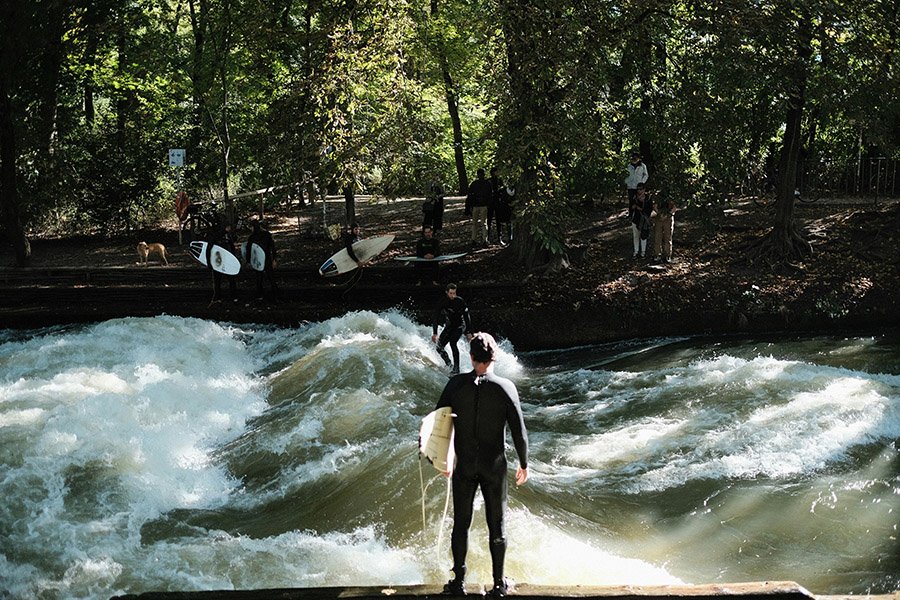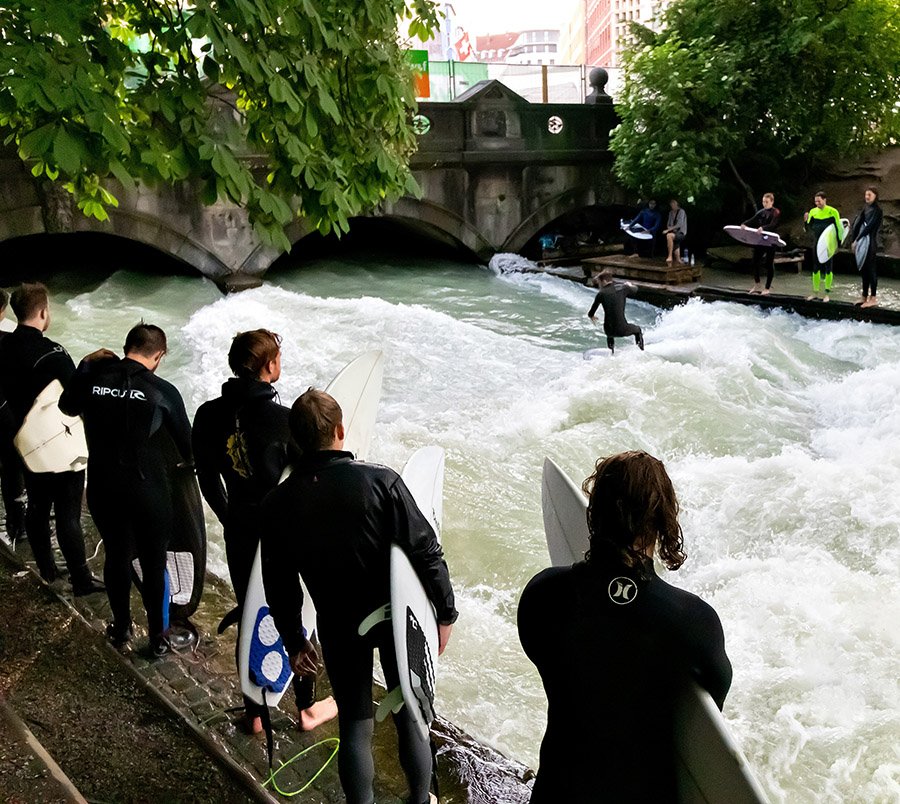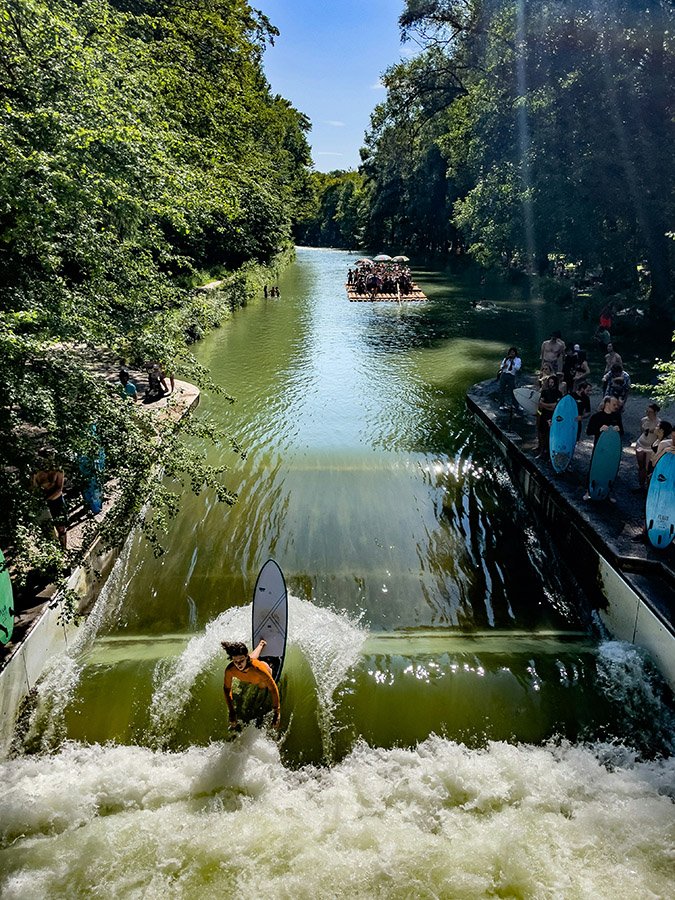The Ultimate Guide to River Surfing for Beginners
River surfing is an exhilarating sport that has been gaining popularity around the world. Unlike traditional ocean surfing, river surfing allows you to ride standing waves on rivers, making it accessible even in landlocked areas. Whether you’re an experienced surfer looking for a new challenge or a beginner eager to dive into the world of surfing, river surfing offers a unique and thrilling experience. This guide will walk you through everything you need to know to get started.
Introduction to River Surfing
What is River Surfing?
River surfing involves riding a stationary wave in a river, created either naturally or artificially. Unlike ocean waves, which move toward the shore, river waves remain in place as water flows over rocks or other obstructions in the riverbed. This allows surfers to ride the wave for as long as they can stay balanced. River surfing has a few key differences from ocean surfing, such as the predictability of the wave and the challenges posed by the river environment.
Why Try River Surfing?
River surfing is appealing for several reasons. First, the waves are consistent and don’t depend on tides, winds, or swells, making it easier to plan your surf sessions. Second, it’s accessible in locations far from the ocean, opening up the sport to a broader audience. Finally, river surfing fosters a tight-knit community of enthusiasts who share a passion for this unique sport.
Also read: Tandem Surfing: A Thrilling Fusion of Surfing and Acrobatic Teamwork

Types of River Surfing Waves
Natural River Waves
Natural river waves are formed when water flows over rocks or other obstacles, creating a surfable wave. These waves vary in size and shape depending on the flow of the river and can be unpredictable. Popular spots include rivers in Colorado and Germany’s famous Eisbach wave in Munich. Surfing natural river waves requires a good understanding of the river’s flow and potential hazards.
Whitewater Park Waves
Whitewater parks are specially designed areas in rivers where engineers create consistent surfable waves. These parks are increasingly common and are often safer and more controlled than natural river waves, making them ideal for beginners. Examples include the Boise Whitewater Park in Idaho and the Glenwood Springs Whitewater Park in Colorado.
Artificial Wave Pools
While not technically part of a river, artificial wave pools simulate the experience of river surfing in a controlled environment. These pools are becoming more popular and are excellent places to learn the basics of river surfing without the risks associated with natural rivers. Facilities like Lakeside Surf in Washington offer standing waves perfect for practicing your skills.

River Surfing vs. Ocean Surfing: Key Differences
River surfing and ocean surfing share the same basic principle—riding waves on a surfboard—but they differ in several significant ways. Understanding these differences can help you decide which style suits you best or prepare you for transitioning between the two.
1. Wave Consistency and Predictability
- River Surfing: The waves in river surfing are stationary, meaning they don’t move towards the shore like ocean waves. This results in a consistent, predictable wave that doesn’t change with tides or winds. You can surf the same wave for as long as you can maintain your balance, making it ideal for practicing technique.
- Ocean Surfing: Ocean waves are dynamic and constantly changing due to factors like tides, wind, and swell direction. This unpredictability adds to the challenge and excitement of ocean surfing but also requires surfers to have a deep understanding of wave patterns and timing.
2. Environment and Hazards
- River Surfing: River environments come with their own set of hazards, including strong currents, submerged rocks, and man-made structures like bridges or dams. The proximity to these obstacles requires surfers to wear protective gear such as helmets and personal flotation devices (PFDs) for safety.
- Ocean Surfing: In the ocean, surfers must contend with rip currents, marine life, and large, powerful waves that can vary in strength. While ocean surfing also requires awareness and respect for the environment, the hazards are generally different from those in a river setting.
3. Surfboard Design
- River Surfing: The boards used in river surfing are often thicker and shorter, designed to perform well on the smaller, slower waves typically found in rivers. The shape and volume of the board are crucial to maintain buoyancy and stability on the stationary wave.
- Ocean Surfing: Ocean surfboards vary widely in design depending on the type of waves and the surfer’s style, but they generally need to be versatile to handle different wave conditions. Boards are usually longer and thinner to allow for speed and maneuverability on moving waves.
4. Access and Location
- River Surfing: River surfing can be done far from the coast, making it accessible to people living in landlocked areas. Whitewater parks and natural river waves in places like Colorado, Germany, and Canada have made this sport increasingly popular.
- Ocean Surfing: Traditionally, surfing has been limited to coastal regions where ocean waves are available. This often requires surfers to live near the coast or travel to surf spots, which can be limiting for those living inland.
5. Surfing Culture and Community
- River Surfing: River surfing communities tend to be smaller and more localized, with a strong sense of camaraderie among participants. The sport’s relatively new and niche status often leads to a more tight-knit community.
- Ocean Surfing: Ocean surfing has a long history and a broad global community. The culture varies significantly depending on the location, but it generally includes a mix of competitive and recreational surfers, with well-established traditions and etiquette.
Also read: Surfing in Thailand: When, Where and How to Get Started

Essential Gear for River Surfing
River Surfboard
Choosing the right surfboard is crucial. River waves are typically smaller and less powerful than ocean waves, so a board with more volume (thicker) is often necessary for slower waves. For faster, more powerful waves, a thinner board might be preferable. It’s important to match your board to the specific conditions of the river wave you plan to surf.
Wetsuits and Booties
Rivers are often colder than the ocean, especially those fed by snowmelt. A thick wetsuit, usually 4/3mm or 5/4mm, is recommended to keep warm. Booties are also essential, as riverbeds are rocky and can be rough on your feet. The right wetsuit and booties will ensure you stay comfortable and protected during your session.
Personal Flotation Device (PFD)
Safety should always be a priority, and wearing a PFD is highly recommended, especially for beginners. Rivers have strong currents and underwater hazards that can make surfing dangerous. A PFD keeps you afloat even if you’re knocked unconscious, and in some areas, it’s required by law.
Helmet
Given the rocky environment of most rivers, a helmet is crucial to protect your head from injury. Make sure the helmet fits snugly and doesn’t slide around, as this could expose you to injury during a fall.
Leash
A releasable leash worn at the waist is recommended for river surfing. This type of leash allows you to quickly detach from your board if it gets caught in the current, reducing the risk of being pulled under.
How to Get Started with River Surfing
Finding a Spot
Start by locating a beginner-friendly river surfing spot. Whitewater parks are generally the best places for beginners because they offer controlled conditions and consistent waves. Look for spots with smaller waves, easy access, and a community of surfers who can offer tips and guidance.
Learning the Basics
Before hitting the water, familiarize yourself with basic river surfing techniques. Begin by practicing your balance and paddling techniques in calm waters. Once you’re comfortable, try catching small waves and gradually progress to larger ones. It’s also a good idea to take a lesson from an experienced river surfer if you’re completely new to the sport.
Safety First
Rivers can be unpredictable and dangerous, so it’s essential to prioritize safety. Always check the river’s flow rate and conditions before entering the water, never surf alone, and make sure to wear your PFD and helmet. Understanding the risks, such as strong currents and underwater obstacles, will help you enjoy river surfing safely.

Popular River Surfing Spots
North America
- Boise Whitewater Park, Idaho: A popular spot with waves for all skill levels.
- Glenwood Springs Whitewater Park, Colorado: Known for its large, powerful wave suitable for experienced surfers(Riverbreak).
Europe
- Eisbach, Munich, Germany: One of the most famous river surfing spots in the world, known for its challenging standing wave(Riverbreak).
Other Global Spots
- Zambezi River, Africa: Offers large, natural waves with stunning scenery.
- Montreal, Canada: Known for its powerful standing waves on the Saint Lawrence River(Riverbreak).
Tips and Tricks for Progressing in River Surfing
Improving Technique
Focus on refining your stance and balance. Practice making smooth, controlled turns and adjusting your weight to maintain stability on the wave. Regular practice will help you develop muscle memory and improve your overall performance.
Common Mistakes to Avoid
Beginners often lean too far back on the board or fail to read the wave properly. Keep your weight centered, and don’t be afraid to ask for advice from more experienced surfers to correct your mistakes.
River Surfing Etiquette
Always be mindful of other surfers. Wait your turn, respect the local community, and avoid cutting in line. River surfing spots can be crowded, so maintaining good etiquette ensures everyone has a positive experience.
Final Thoughts
River surfing is an exciting and accessible way to enjoy surfing without needing to be near an ocean. With consistent waves and a growing community of enthusiasts, it’s a sport that offers endless fun and challenges. Whether you’re a beginner or looking to expand your surfing repertoire, river surfing is worth exploring. Embrace the journey, stay safe, and enjoy the ride!





